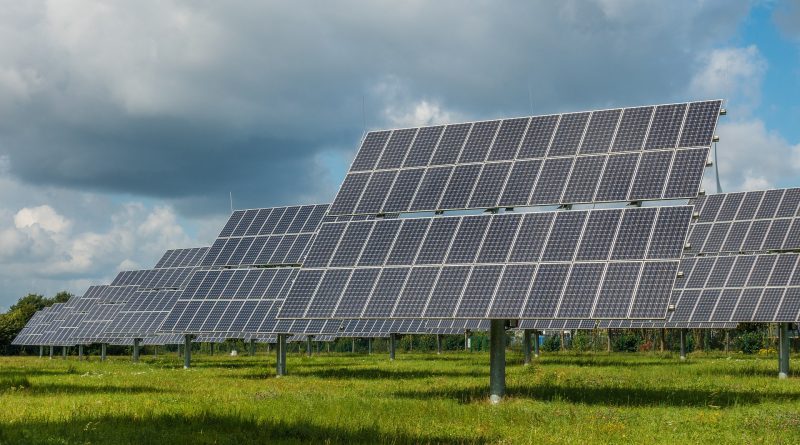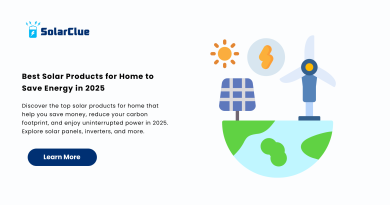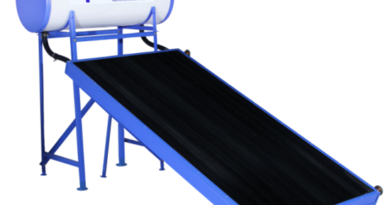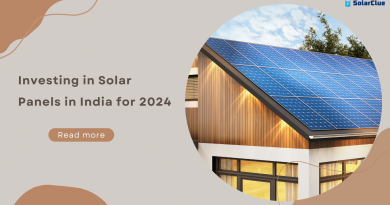Understanding How On-Grid Solar Systems Work Efficiently
Solar energy is rapidly gaining popularity as a sustainable and renewable source of power. One of the most common systems used to harness the sun’s energy is an on-grid solar system. In this blog, we will dive into the workings of an on-grid solar system, exploring its components, functionality, and benefits.
Table of Contents
Understanding On-Grid Solar Systems
On-grid solar systems, also known as grid-tied or grid-connected systems, are designed to work in conjunction with the electrical grid. They allow homeowners or businesses to generate and use their own solar power while still having the ability to draw electricity from the grid. Let’s take a closer look at how these systems function.
1. Solar Panels
The main component of any on-grid solar system is the solar panels. These panels are made up of photovoltaic (PV) cells, which convert sunlight into direct current (DC) electricity. They are typically mounted on the roof or ground, facing the sun to maximize exposure. The more sunlight the panels receive, the more electricity they can generate.
2. Inverter
The DC electricity produced by the solar panels needs to be converted into alternating current (AC) electricity, as that is the form of electricity used in homes and businesses. This is where the inverter comes in. The inverter converts the DC electricity into AC electricity, which can be used to power appliances, lights, and other devices.
3. Grid Connection
The AC electricity produced by the solar panels through the inverter is then connected to the main electrical panel of the property. This allows the solar energy to flow into the property’s electrical system and be used to power the various electrical loads. At this point, any excess electricity can be fed back into the grid.
4. Net Metering
Net metering is a key feature of on-grid solar systems. When the solar panels produce more electricity than is being consumed, the excess power is sent back to the grid. This excess power is recorded by a bi-directional meter that spins back, effectively giving the homeowner or business credits for the excess electricity. During times when the solar panels are not producing enough electricity (e.g., at night), the property can draw power from the grid without interruption.
5. Electricity Grid Backup
Having an on-grid solar system provides a level of energy security. If the solar panels are unable to produce enough electricity (e.g., during cloudy days), or if the property’s electricity demand exceeds the solar power being generated, the grid automatically provides the necessary additional electricity. This assures constant power supply, irrespective of solar availability.
Benefits of On-Grid Solar Systems
Now that we have explored the inner workings of an on-grid solar system, let’s take a moment to highlight some of the notable benefits it offers.
1. Lower Energy Costs
By generating your own electricity with an on-grid solar system, you can significantly reduce your monthly energy bills. The excess electricity you produce can be credited, resulting in even greater savings.
2. Environmental Friendliness
On-grid solar systems produce clean, renewable energy without harmful emissions. By harnessing the power of the sun, you not only reduce your carbon footprint but also contribute to a greener and more sustainable future.
3. Simple Installation and Maintenance
Installing an on-grid solar system is relatively straightforward, especially when compared to off-grid systems that require batteries for energy storage. Moreover, these systems have minimal maintenance requirements, typically limited to occasional cleaning and inspections.
Conclusion
Empower your journey towards clean energy with SolarClue®! On-grid solar systems seamlessly integrate with the electrical grid, providing you with a reliable source of clean and renewable energy. Experience the synergy of various components working harmoniously to generate electricity, cut down on energy costs, and minimize your environmental footprint. By choosing an on-grid solar system through SolarClue®, you not only enjoy the benefits of solar energy but also actively contribute to building a more sustainable world. Join us in shaping a brighter, cleaner future—make the switch with SolarClue® today!
Frequently Asked Questions
An on-grid solar system, also known as a grid-tied system, is a solar power setup connected to the local electrical grid, allowing for the generation of electricity and the ability to feed excess energy back into the grid.
On-grid solar systems generate electricity by converting sunlight into electrical power using solar panels. This power can be used in the home and any excess can be sent back to the grid.
In most cases, on-grid solar systems are designed to shut down during power outages to ensure the safety of utility workers. Special inverters may be needed to enable power generation during outages.
Net metering is a billing arrangement where excess energy generated by an on-grid solar system is sent back to the grid, and the owner receives credits or compensation for the contributed energy.
The connection to the electrical grid allows on-grid solar systems to draw power from the grid when solar generation is insufficient, providing a continuous and reliable energy supply.
Generally, on-grid solar systems do not require batteries since they can draw power from the grid when solar generation is insufficient. Batteries may be optional for backup power during outages.
On-grid solar systems are designed to operate in conjunction with the grid. While they can generate power independently during the day, they rely on the grid for power during the night or periods of low sunlight.
On-grid solar systems typically have low maintenance requirements. Regular cleaning of solar panels and occasional professional check-ups are usually sufficient.
Installation times can vary based on factors such as system size and complexity. On average, residential installations may take a few days to a couple of weeks.
Many regions offer government incentives, tax credits, or rebates to encourage the installation of on-grid solar systems. It’s advisable to check local programs for specific details.




